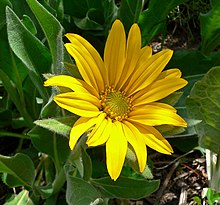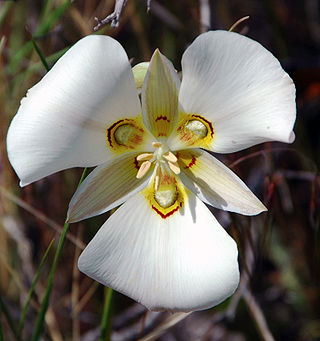
Calochortus is a genus of flowering plants in the lily family. The group includes herbaceous, perennial and bulbous species, all native to North America.

Psathyrotes is a genus of North American plants in the sneezeweed tribe within the sunflower family. It contains annual and perennial forbs and low subshrubs native to dry areas of southwestern North America. Common names include turtleback, brittlestem, and fanleaf.

Rafinesquia, commonly known as plumeseed, is a genus of flowering plants in the family Asteraceae, native to the western United States and northwestern Mexico.
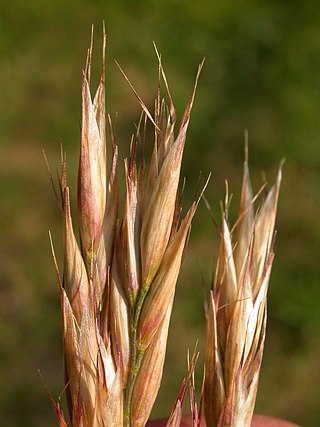
Danthonia is a genus of Eurasian, North African, and American plants in the grass family. Members of this genus are sometimes referred to as oatgrass, but that common name is not restricted to this genus. Other common names include heathgrass and wallaby grass. Australian species have since been reclassified into the genus Rytidosperma.

Pyrrocoma is a genus of North American plants in the family Asteraceae. These wildflowers are sometimes known as goldenweeds.

Townsendia is a genus of North American plants in the tribe Astereae within the family Asteraceae.

Balsamorhiza is a genus of plants in the family Asteraceae known commonly as balsamroots. These are perennials with fleshy taproots and caudices bearing erect stems and large, basal leaves. Atop the tall stems are showy yellow sunflower-like blooms. Balsamroots are native to western North America.

Psilostrophe, the paperflowers is a genus of North American plants in the sneezeweed tribe within the sunflower family.

Calamovilfa is a genus of North American plants in the grass family native to the United States and Canada.

Stenotus is a genus of flowering plants in the family Asteraceae. There are four species, all native to western North America. They are known commonly as mock goldenweeds.
Tonestus, common name serpentweed, is a genus of North American flowering plants in the family Asteraceae.

Xanthisma, common name sleepy-daisy, is a genus of flowering plants in the family Asteraceae.
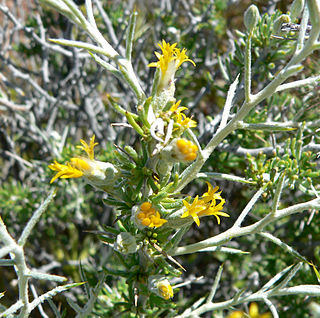
Tetradymia is a genus of North American shrubs in the groundsel tribe within the sunflower family. Horsebrush is a common name for plants in this genus.

Torreyochloa is a genus of North American and northeast Asian plants in the grass family. False mannagrass is a common name for plants in this genus.

Sphaeromeria is a genus of flowering plants in the chamomile tribe within the sunflower family.
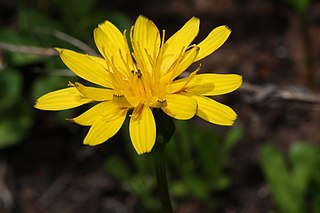
Nothocalais is a genus of North American flowering plants in the tribe Cichorieae within the family Asteraceae. There are known generally as false dandelions or false agoseris.

Psilocarphus is a genus of flowering plants in the tribe Gnaphalieae within the family Asteraceae.

Agnorhiza bolanderi is a species of flowering plant known by the common name Bolander's mule's ears. It is endemic to California, where it is known only from a narrow section of the Sierra Nevada foothills about 275 kilometers long from Shasta County to Mariposa County. It grows in chaparral and grassland habitat, usually on serpentine soils.

Piptatheropsis is a genus of plants in the grass family.

Wyethia amplexicaulis is a common herbaceous perennial plant from the northwestern United States called northern wyethia, northern mule ears, or black sunflower. Because of its tendency to grow together in dense colonies and its large, showy flowering heads it is a well known western wildflower that is often photographed. It is disliked by range managers because its leaves are not very palatable to large herbivores including livestock.
